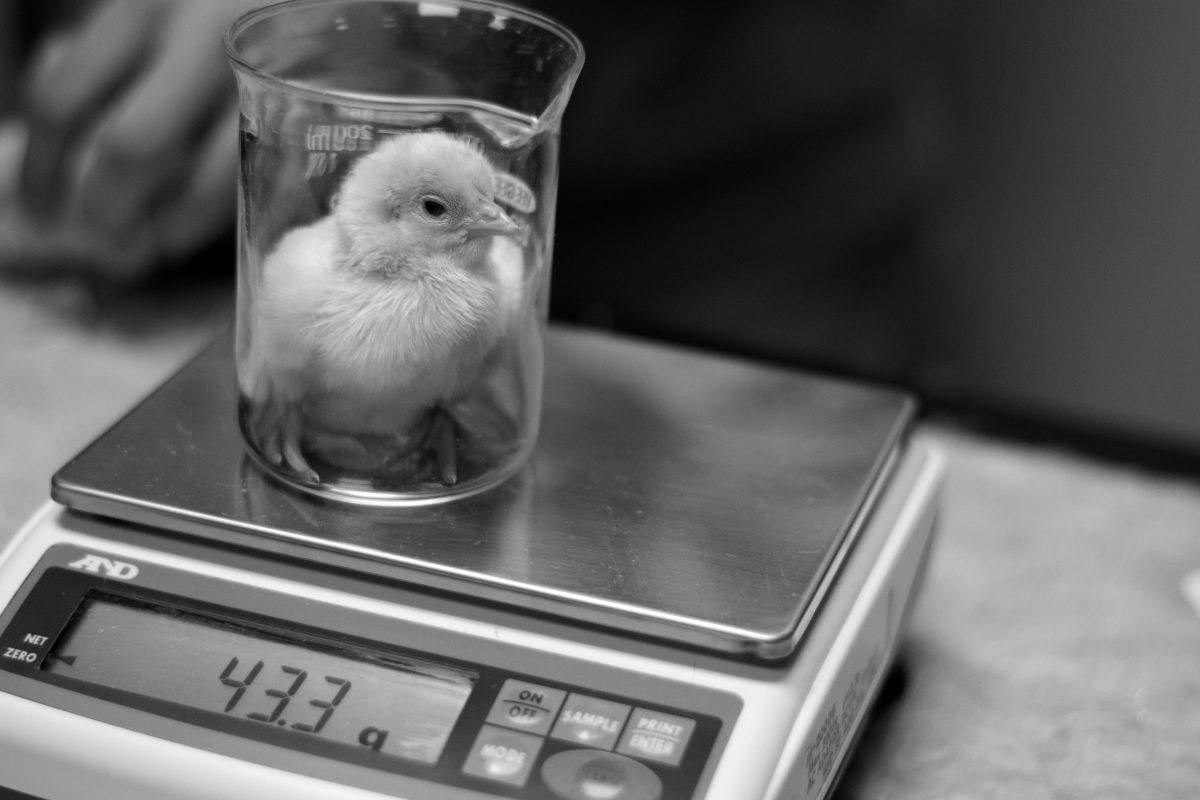Fear of any kind of influenza has been prevalent in human society for ages, ranging from the incredibly deadly Spanish influenza of the early 1900s to the more recent fear of swine flu and bird flu. But influenza can also have an indirect effect on humans, as it spreads and affects local chicken populations including both backyard pets and industrial animal agriculture facilities where most of our eggs and poultry products are produced.
In an attempt to stop the spread of avian flu, state officials announced in June that North Carolina would ban public shows and sales of live poultry from Aug. 15 to Jan. 15—which means this year’s State Fair will not include the popular poultry exhibit.
The North Carolina Department of Agriculture recently released an advertisement requesting that people register their chickens, even if they are just in backyard coops. There was only one problem: People weren’t doing it. The goal behind registering chickens is to monitor which birds contract avian flu, which is spread through the feces of wild birds who carry the disease. All wild birds are carriers of the disease, and the arrival of migratory season should be a major concern for the spread of avian flu, though the spread to humans is not direct from diseased birds, according to John Brake, a William Neal Reynolds professor of poultry science, physiology and nutrition in the College of Agriculture and Life Sciences.
“In South China and places like Vietnam, what happens is the pigs, chickens, ducks and people all live in the same house,” Brake said. “The pig has the receptor for human and for bird influenza, and the pig picks it up, and that’s where the recombination [of the virus] occurs. And that’s why those things become infectious to humans as well.”
Brake said bird flu is also present in countries such as India and Indonesia, but because people in those countries are less likely to keep pigs, fewer instances of bird flu are reported.
The tendency of family farming and organic free-range farming, where all of the animals are mixing and interacting with not only each other but also with wild species, also contributes to the spread of bird flu.
Brake gave the example of Thailand as well, a country that exports a large amount of chickens to Europe, developing a problem with bird flu that prevented them from exporting. According to Brake, Thailand made people keep their livestock and birds in barns separate from other birds to limit the spread of the flu. A major problem with the disease is that by law, there is no option to vaccinate because once a chicken has been vaccinated, it is not possible to determine if it has been exposed to the flu or not.
“Where your problem is, the way we produce eggs for instance, like in the Midwest where we had this problem, we used to have one chicken house, and you’d have anywhere from 20 to 100,000 birds in it,” Brake said. “Now we have 1 million birds in a total of 10 houses. One bird gets infected, they kill them all.”
Brittney Danehy, a senior studying history, shares the concern about the spread of avian flu. In total, Danehy has 30 chickens, four turkeys, seven peacocks, a number of ducks and a parrot, in addition to nine goats, one llama, five dogs, two cats and fish. The spread of avian flu has affected her already, though fortunately not through the death of her birds. Wicked Chicken Auction, a place in Clayton, North Carolina where she used to go to buy and sell chickens and goats, has closed due to the fear of the spread of disease.
“The state banned after mid-August any public auctions and shows until January,” Danehy said. “At first, Wicked Chicken was just going to close until Jan. 1, but they were still going to have goat auctions and rabbits. The first auction lasted 30 minutes because not everybody has goats to sell, and after that they made an announcement that they were closing indefinitely.”
Danehy is worried about the spread of avian flu to North Carolina because it is highly contagious, and there is a high mortality rate associated with it. In addition, Brake said he is worried about the high financial cost associated with a dying bird population.
“The poultry industry for this state alone is $4 billion,” Brake said. “Generally, if you look at money in a farm, you multiply it about four to five times if you look at the economic effect — that’s $20 billion. That’s bigger than the state budget. That would devastate this state’s economy.”
Though the risk is great, there are ways to prevent the spread. In fact, Brake has a 17-point contract he makes his students sign before they can come to the poultry farm. In the plan, there are statements about shoe removal at certain points in the journey to the farm. According to Brake, the biggest problem for the spread of avian flu is tracking wild bird feces on shoes and tires.
“You can control it in many respects,” Brake said. “It’s not that difficult to do, but you can’t be tracking things around. You have to break the tracking, have to limit the number of tires and cars and you have to know where they go. There’s nothing perfect, and you can’t do it with disinfectants. We’ve seen for years people use disinfectants, and it just makes it worse because disinfectants really don’t kill very much. It’s all about controlling your traffic flow and keeping the wild birds and domestic birds separate.”





